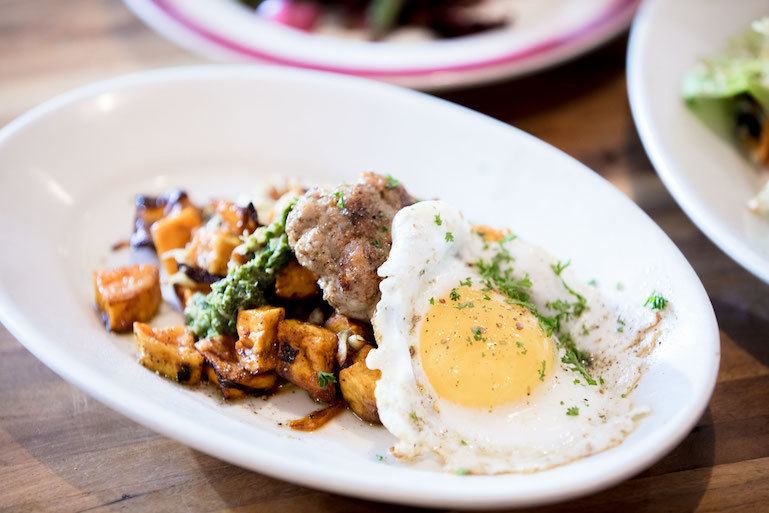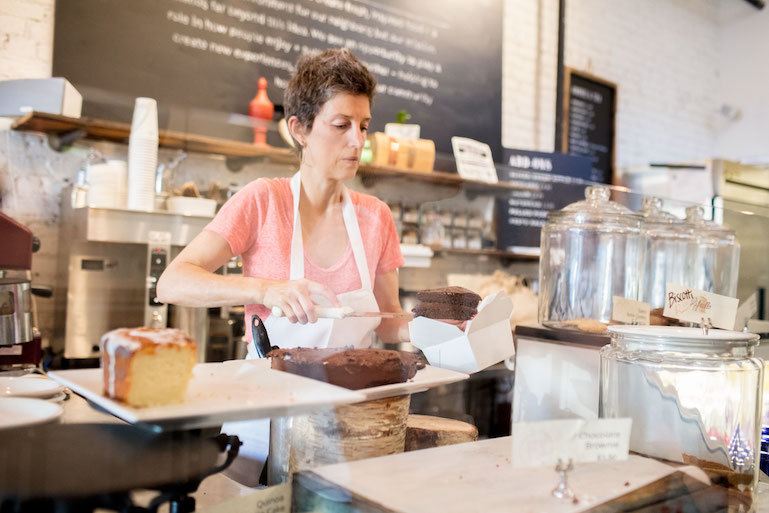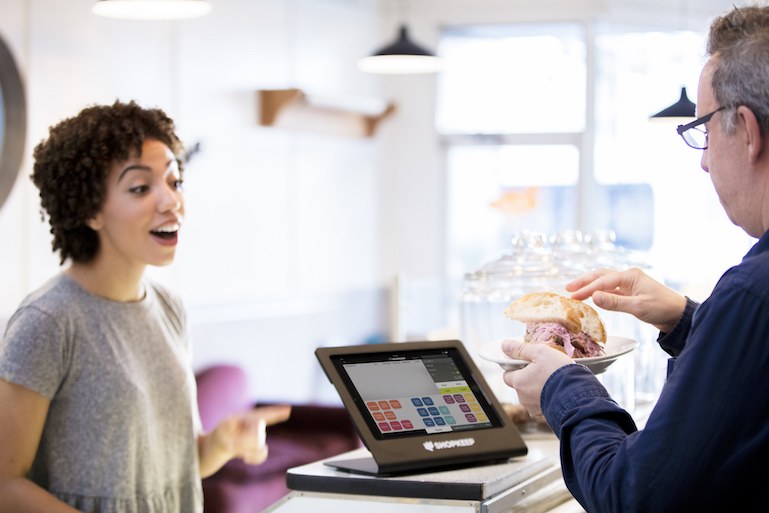
Thrive on a Dime: How To Save Money Running Your Restaurant
Whether you sell ice cream, run a burger restaurant, or offer the finest cuisine in a five-star location, there’s no way around it: running a restaurant can be expensive.
From the time and energy it takes to hire and oversee employees, to the cost of ordering inventory and maintaining a fully-stocked kitchen, there are a lot of costly pieces that go into the process of operating a successful restaurant. As such, cost management is a top priority for virtually every restaurant owner and manager in the business.
However, as in all businesses, there’s a right and wrong way to manage costs effectively. While some immediate cost-cutting strategies can end up creating expensive problems in the long run, seemingly pricey expenditures can actually save you thousands over the life of your restaurant.
By balancing current needs with investments that will bear fruit in the future, it’s possible to save money without letting quality suffer. Here’s what you need to know about running an eatery on a budget at a high level, as well as tactical tips for how to save money running a restaurant.
Equipment and Supplies
Without a fully stocked kitchen, a dressed up dining room, and plenty of dishes and flatware, it’s going to be extremely difficult for your restaurant to run as it should. However, all of these things cost money, putting you in the hole before you even open your doors. However, there’s no reason to invest a fortune in top-of-the-line equipment when there are other high quality and affordable options available.
Let’s look at a few of the main ways that you can save on restaurant equipment and supplies.
Negotiate With Suppliers
Restaurant suppliers come in all shapes and sizes, from leading national enterprises to small mom and pop shops. The prices and selection that each offers will depend on everything from location to brands, but one thing is certain, many necessary items will be out of your initial budget, especially if you don’t want to break the bank before your grand opening.
Instead of just accepting the list price, consider asking for a discount or cost-saving option before placing an order. With a little honesty and persuasive language, you may be able to secure a small price break, or even free shipping and delivery costs (which can be exorbitant for heavier equipment like pizza ovens or food storage refrigerators). You’ll never know if you don’t ask!
SEE ALSO: Your Guide to Finding the Right Restaurant Suppliers
Explore Second-Hand
There’s no shame in not buying everything brand new. Rather than sinking everything you have into state of the art equipment, shop at retailers that sell used equipment to score big savings. When stocking your restaurant, new ovens, stoves, grills, and flat tops will look better, but there’s no significant difference in quality when buying used from a reputable vendor. Plus, it’s not like you invite customers back into your kitchen to check out your equipment before ordering. Functionality is far more important than looks in this case.
Take time to browse restaurant-specific resellers, and don’t shy away from large marketplaces like Craigslist and eBay. Shopping here will require a little more due diligence, but there are great deals to be had for those willing to do the legwork.
Auctions can also be a good way to get a deal without sacrificing quality. When area restaurants go out of business, they will often sell off their leftover wares, like kitchen appliances, dishwashers, and prep tables, in an effort to recoup losses. Keep your ear to the ground and connect with others in your industry to stay on top of upcoming auctions. If you stumble upon a closure, there’s no shame in asking specific questions related to equipment you still need or pieces you have but want to upgrade.
Keep Decor to a Minimum
Decor can often separate one restaurant from another, sending a strong message to customers about your identity as a dining destination. However, throwing thousands into revamping your space may be a gamble you can’t afford to make. Yes, design and decor matter, but there are ways to create an inviting space without going overboard.
If your brand allows, consider sticking with more of a minimalistic vibe. Skip the tablecloths, saving cash on both purchasing and consistent laundering, and keep walls painted a clean, bright, and neutral hue. If you have exposed brick or wood anywhere in your space, don’t cover it up; instead, let it shine for a rustic appearance. Consider alternative wall coverings, like fabrics or painted murals, to eliminate the need for expensive paintings or works of art.
Maximize Space
When setting up a restaurant, it’s important to think critically about the space you have available. The number of people you can seat at one time can make or break the revenue you are able to bring in; for example, if your average sales per patron is around $40, being able to seat just four extra people a night can mean an extra $160 a day, or an annual gain of $58,400.
Think strategically about the kinds of tables available before making a purchase. While lining the walls with big, comfy booths may sound inviting, this can be very limiting in a tight space. Instead, consider a series of small two tops that can be pushed together, rearranged, and moved around the restaurant to best accommodate parties of all sizes. Just be sure that you don’t take this too far. You don’t want to get to the point where you’re cramming customers into your space. Ensure there’s balance and that guests are comfortable throughout their meal.
Quality vs. Price
When shopping for equipment for the back of the house, the front of the house, or even decor, it’s important to balance quality with price. If it looks too good to be true, it probably is, so if someone is advertising brand new Vulcan ovens at a quarter of the price of retail, you’re likely not getting an authentic product. What seems like a great deal can end up costing you big in the long run, too. If kitchen equipment needs to be replaced in the first year or two because it can’t stand up to your demands, you’ll only end up paying more over time.
Menu Management
Your menu is one of the most critical components of your restaurant, but that doesn’t mean it should be set in stone once you hit on a combination of menu items that work. Whether you realize it or not, your restaurant menu could be costing you a small fortune each year, driving up your costs in ways you don’t see coming.
In reality, your menu affects countless different elements of your restaurant. It influences your inventory needs, the number of cooks you need in the kitchen, the size and variety of your cooking equipment, and even the plates you use. As such, a few tweaks to your menu can mean a substantial expense – or, with a little planning, big savings. If you’re looking to operate on a strict budget, an analysis of your menu can yield big results.
Consider Size
The ingredients you use can be a big expense, especially when you have a diverse menu with a wide range of cuisines and options. Cutting dishes from your menu can be a good way to get costs under control, reducing the size of your orders and maximizing what your inventory can accommodate.
Some restaurateurs believe that a big menu is a benefit, as it is more likely to attract customers with different preferences, but the opposite is usually true. A big menu means high food costs, resulting in huge and expensive inventory orders with a higher likelihood of food waste. A smaller menu, with fewer menu items, can be easily controlled, making it easier to streamline ordering with a reduced risk of wasted product.
Also, consider the size of the plates you are using. Big plates demand bigger portions, while small plates look full with less food. Cutting portion size is a big avenue for savings, so try downsizing your plates to help your food go further. However, be sure to balance the size of the portion with the price you’re charging customers or risk building a reputation as a ripoff establishment.
Maximize Profit Margins
Profit margin, or the difference between gross food sales and food costs, has a big influence on the overall profitability of your restaurant. A lower profit margin means that you’re barely breaking even, while a higher profit margin indicates a strong return on your investment.
Instead of assuming all of your dishes are winners, explore which ones are raking in profit and which are not. One study found that appetizers and beverages bring in the highest margins and that less expensive ingredients, like pasta and chicken, tend to deliver better margins than dishes containing more expensive ingredients like red meat or shellfish. So, just because you charge $60 for a 24-ounce ribeye and $20 for a chicken parm, doesn’t mean the steak is bringing in the better margins.
Get Creative
Have ingredients that are about to go bad, or leftovers from dishes that just aren’t selling? It’s time to get creative. Instead of throwing away what you can’t sell from your standard menu, introduce specials and run promotions to cut your losses. Many restaurant managers simply wait until it’s too late and write things off as a loss instead of repurposing ingredients before the food goes bad. As far as cutting costs is concerned, the more you can do to proactively move inventory, the better.
Price Shop
Seasonal menus are about more than just showcasing a chef’s skills or preparing food that’s appropriate for the weather; a seasonal menu can be a good way to get a deal on produce and other season-specific goods. In general, items that are in season are more affordable than those that aren’t, giving you a great way to cut costs while still offering fresh, delicious, and timely entrees that customers will love.

Hiring and Employee Management
Did you know that the average cost of a failed hire is $14,900? It’s true – hiring the wrong person can cost you cash that you can’t afford to lose. While not every hire is going to work out, even if the interview seems like a slam dunk, working hard to minimize challenges in the workplace can go a long way. With an efficient and responsible approach to hiring, training, and management, it’s possible to create a long-lasting staff that can properly handle any situation.
Attract the Best Candidates
The restaurant industry appeals to a wide range of people, from students who need to work around their classes to those who need quick cash. In order to hedge your bets and avoid turnover, it’s important to attract the right kinds of potential staff members off the bat.
When posting your job ad, think about the things you want to see in your employees. Are you looking for someone diligent and driven? A team with previous restaurant experience? Students who are likely to take night and weekend shifts? Decide who you want to stand by your side, and customize your ads accordingly.
Fine Tune Interview Skills
An interview can be the deciding factor when hiring, so be sure to create a thorough and repeatable process that helps you fully evaluate candidates. Don’t just wing it. Come prepared with a structured framework you can use when evaluating all employees so that you can gain an accurate basis for comparison, and don’t be afraid to ask tough questions.
If necessary, utilize personality and skills tests to ensure the people you’re interviewing are who they say they are. While it typically isn’t covered in the interview, you’ll also want to request and check references to get other perspectives on the candidate’s character and competence.
Prioritize Training
Some restaurant managers give new staff little more than a floor plan or a book of recipes and assume that’s good enough, but it really isn’t.
Before letting your new hires loose on customers, take at least five to ten shifts to go over the ropes, including policies on greeting tables, upselling, menu descriptions, table locations, expo items, ingredients, cook times, and more. Consider implementing tests to confirm training is complete, like floor plan and menu quizzes. When preparation is sufficient, employees will be satisfied, confident, and more likely to stick with you.
Value Your Employees
Both full-time and part-time employees are likely to be a critical part of your operations, so fostering a strong sense of morale is important. When your staff feels valued, they’re far more likely to stay with you.
If your servers think your sections are too small and they aren’t earning enough, redraw the floor plan on a trial basis. If your chefs want another set of hands-on weekend nights, listen. Happy employees are less likely to leave, lowering your labor cost and expenses related to hiring replacement staff.
SEE ALSO: The True Cost of Bad Employee Management
Software and Technology
As they say, time is money. The time you spend engrossed in tedious tasks, like making floor plans, creating schedules, tracking inventory, and even managing financial reporting, means less of an investment you can make into the success of your business. The right software solutions can help by streamlining your operations, saving you time, and by providing the tools necessary to save money.
Invest Today; Save Tomorrow
Dropping cash on state-of-the-art software solutions may seem like an expense you can’t afford to make, but in reality, the right resources can offer significant advantages, regardless of cost. For example, modern point of sale (POS) systems can handle everything from inventory management to employee scheduling, taking the burden of administrative tasks off of your shoulders and streamlining your day-to-day operations.
These tech innovations can save you time, minimize mistakes, and provide insights that can help you save big. For example, a POS that can track inventory makes it easy to see trends in sales, helping you streamline orders and determine which dishes are selling – and which aren’t. This can help you save money by fine-tuning your menu, making a POS an investment that pays for itself.

Choose the Right POS System
POS systems used to handle little else but debit and credit card payment processing, but those days are long over. Today’s restaurant POS systems, like ShopKeep’s Ambur interface, are dynamic and multi-faceted, offering advantages like:
- Restaurant scheduling, including peak hour analysis to help you staff the right number of employees during your busiest and least busy shifts
- Financial and sales analytics, highlighting key sales data so you can easily identify what’s working and improve what isn’t.
- Tableside tablet ordering, allowing servers to ring in orders in real time to expedite meal delivery.
- Inventory management, to help you see what you’re ordering, when you’re ordering it, and what you have left in stock.
- Marketing innovations, providing easy customer loyalty programs, customer tracking and management, and more.
- Integrations with key business tools like accounting software, email marketing programs, and much more.
With these kinds of tools and access to real-time data, managers can now keep tabs on every element of their restaurant’s operations. This allows immediate recognition of problems for fast, effective solutions, ensuring small issues don’t grow into big, costly ones.
SEE ALSO: How Much Does a Restaurant POS System Cost?
Standards and Legal Considerations
There’s more to a great restaurant than good food and friendly service. Licensing and regulatory requirements can sink a restaurant that can’t keep up, so be sure you have your paperwork in order to avoid expensive fees, fines, and potential closure.
Before opening your doors, you’ll need to file with local agencies for some or all of the following licenses:
- Business license
- Food service license
- Liquor license
- Food handlers’ permit
- Employer Identification Number
- Sign permit
- Certificate of occupancy
- Music license, if you plan to play copyrighted songs
You and your staff will also need to follow any regulations imposed by federal and local health departments. Food safety is incredibly important, and ignoring general sanitary standards can lead to illness, fines, and a ruined reputation. This is particularly true in jurisdictions that are required to post health department ratings in front windows; a drop from even an A rating to a B rating can cost your business a small fortune.
SEE ALSO: 9 Food Safety Tips Every Restaurateur Must Follow
Marketing and Advertising
Restaurant marketing can be a big part of running a successful, profitable eating establishment. After all, how will potential guests know what you have to offer if they don’t know you’re there?
Many restaurant owners shy away from marketing, relying solely on word of mouth and online reviews. However, this can be a sizable mistake, leading to a reduction in overall visitors, no matter how good your food may be. With the rise of online media, marketing doesn’t have to cost a fortune and you don’t need to be a creative wizard to come up with effective restaurant marketing ideas. Tools like social media are both affordable and effective, allowing businesses to build a presence online, and grow sales, without a big investment.
Social Media Marketing
Social media is a boon for small businesses, making it easy to network with your target audience. With little to no cost to get started, you can easily build a reputation among your local food market with a few targeted social media posts.
Social media marketing (Facebook and Instagram marketing) for restaurants can be accomplished in numerous ways, but keep the following tips and tricks in mind:
- Create a consistent voice that speaks to your restaurant’s brand.
- Showcase what defines you, including behind the scenes secrets, menu specials, recommendations, and seasonal changes.
- Share user-generated content to show customers you care.
- Post announcements, like holiday parties and special events, so that diners can plan in advance.
- Promote community activities, like volunteer events and sponsorships, to build some goodwill.
- Cross-post on multiple platforms, like Twitter, Facebook, and Instagram, to ensure everyone in your audience sees your messages.
- Try to encourage audience participation and engagement with tactics like an Instagram contest.
- If you run paid social media ad campaigns, use location-based marketing and targeting to reach those most likely to visit your restaurant.
Running a Winning Business
With the right approach, it’s certainly possible to run a restaurant on a budget, especially when you think strategically, fine-tune all major elements of management, and take time to invest in a great POS. After all, putting the right technological and operational foundation in place can make all the difference when strategically cutting costs and maximizing revenue.
Want to try ShopKeep for yourself?
Just answer a few easy questions.
Need help finding the right point of sale?
Just complete the form. We’ll call you right back to explain how ShopKeep can work for you.
Hit the ground running.Sprinting, in fact!
Read our free, comprehensive guide, Small Business 101, to learn all you need to know about starting a thriving business.

